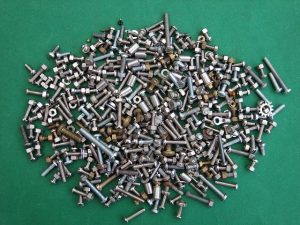
Hexagon has become the most common shape in which bolts and nuts, as well as many other fasteners, are made. Characterized by the presence of six sides, hexagonal fasteners are used in a variety of applications. You can find them in furniture, household appliances, building frames, kids’ toys, automobiles and more. Considering that dozens of other shapes exist, though, you might be wondering why most bolts and nuts are hexagonal.
They Are Easy to Turn
Bolts and nuts are designed with a hexagonal shape because it makes them easy to turn. With six sides, you can turn a fastener just one-sixth of the way to reach the next flat parallel. There are six flat parallels on hexagonal bolts and nuts. When you tighten a hexagonal bolt or nut, you must turn it past these parallels. Hexagonal fasteners are easier to turn than other types of fasteners because they have six parallels.
To better understand how a hexagonal shape increases the ease at which bolts and nuts turn, consider this example: Square fasteners have four sides. In order to tighten a square bolt or nut, you must turn it one-quarter of the way each time to reach the next flat parallel. Hexagonal fasteners, on the other hand, only require one-sixth turning of the way each time to reach the next parallel. In other words, you must turn a square fastener 90 degrees to “click” it into a flat parallel, whereas hexagonal fasteners require just 30 degrees of turning to reach the next flat parallel.
If a bolt or nut has more than six sides, it may break or fracture. Therefore, hexagon has become the most leading shape in which bolts and nuts are made.
Universally Accepted
While the main reason bolts and nuts are hexagonal is because it makes them easy to turn, hexagon has also become a universally accepted standard. Consumers and businesses throughout the world use hexagonal fasteners. If fasteners featured many different shapes, they wouldn’t be compatible with each other. This has prompted many manufacturers to focus specifically on making hexagonal bolts and nuts.
In Conclusion
You can find bolts and nuts in several shapes, but no shape is more common than hexagonal. The use of a hexagonal shape makes fasteners easier to turn by reducing the required turning distance. To tighten a bolt or nut, you must turn it. Thanks to their side sides, hexagonal bolts and nuts require a turning radius of just 30 degrees to reach the next flat parallel.
